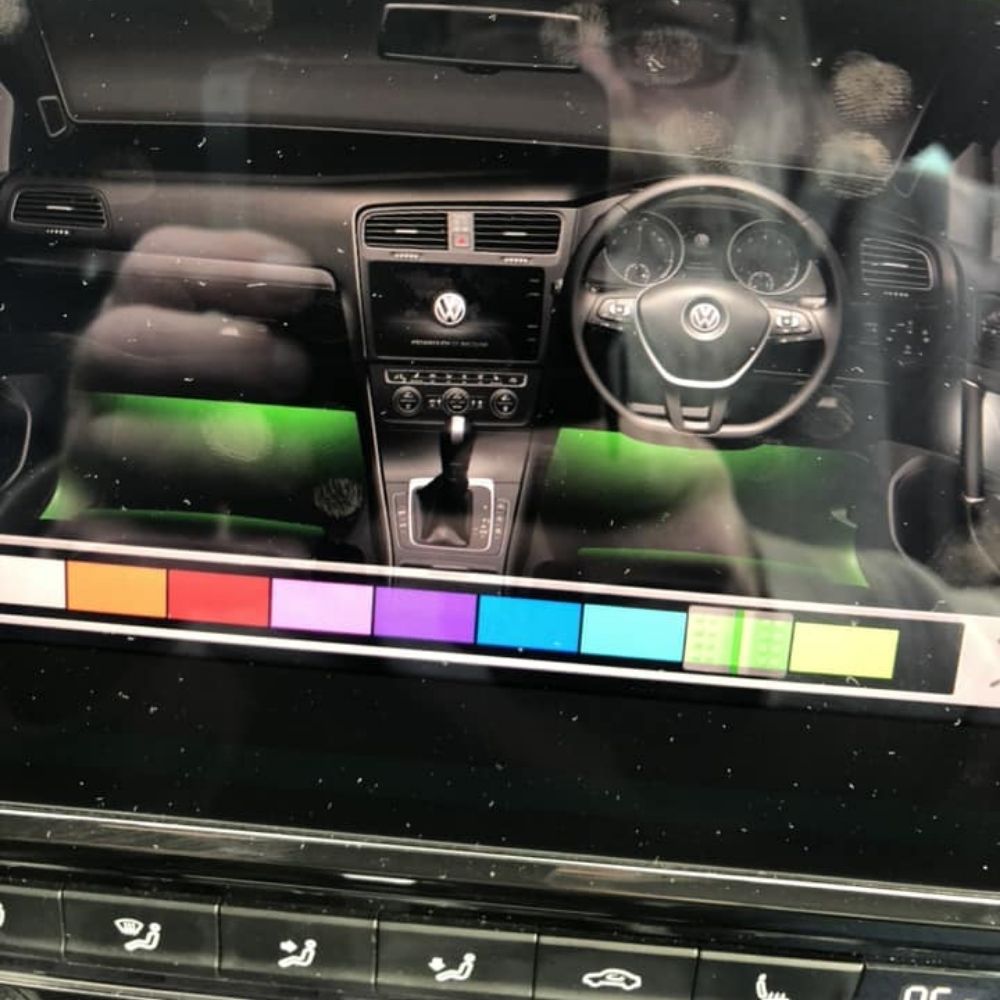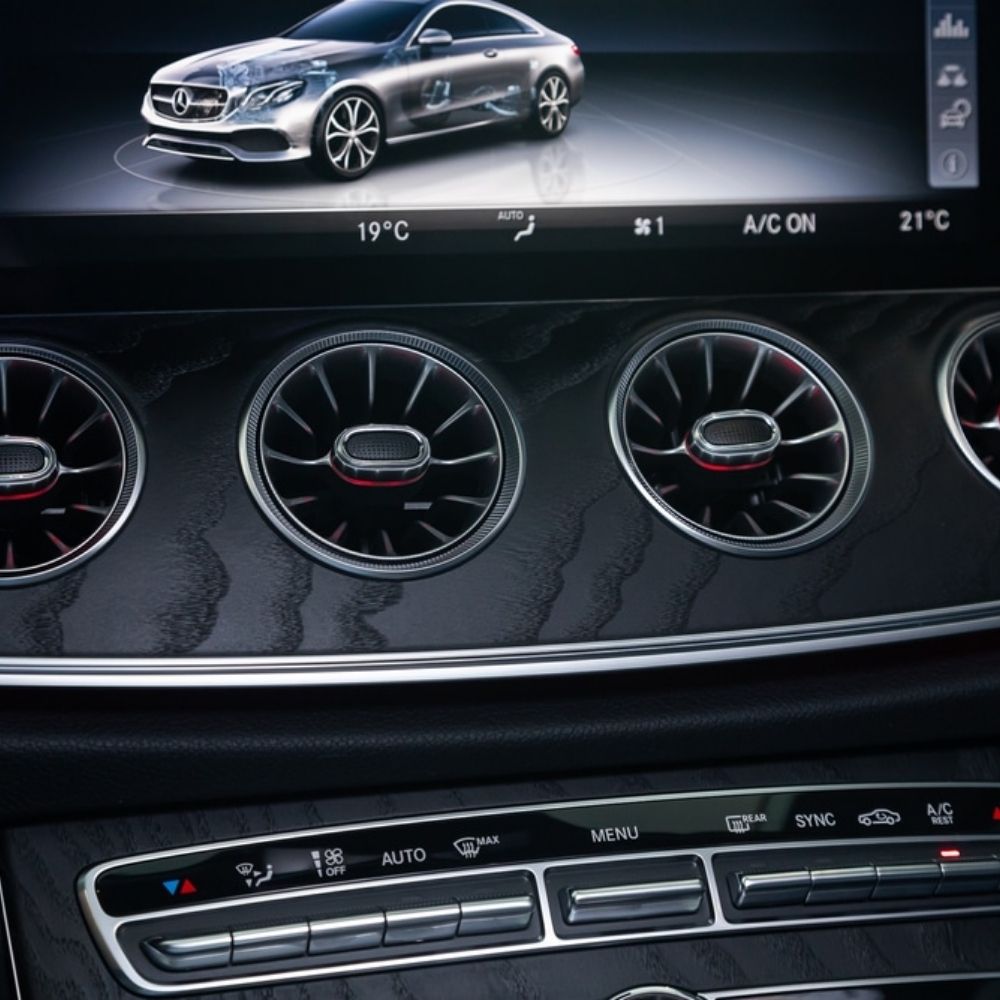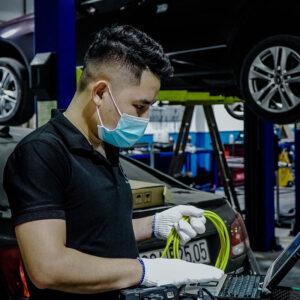
Audi A6 Trouble Code 01592: What Does It Mean?
Contents
- 1. Understanding Audi A6 Trouble Code 01592
- 1.1. What is the Air Quality Sensor (G238)?
- 1.2. How Does the Air Quality Sensor Work?
- 1.3. Symptoms Associated with Trouble Code 01592
- 1.4. Common Causes of Code 01592
- 2. Diagnosing Audi A6 Trouble Code 01592
- 2.1. Preliminary Inspection
- 2.2. Scanning for Diagnostic Trouble Codes (DTCs)
- 2.3. Checking the Sensor Circuit
- 2.4. Testing the Sensor Signal
- 2.5. Evaluating the Wiring Harness
- 2.6. Inspecting Connectors
- 3. Repairing Audi A6 Trouble Code 01592
- 3.1. Replacing the Air Quality Sensor
- 3.2. Repairing Wiring Issues
- 3.3. Cleaning or Replacing Connectors
- 3.4. ECU Repair or Replacement
- 3.5. Clearing the Trouble Code
- 4. Advanced Troubleshooting Tips
- 4.1. Using a Scan Tool for Live Data
- 4.2. Checking for Software Updates
- 4.3. Seeking Expert Assistance
- 5. Code 01592 and Related Diagnostic Trouble Codes (DTCs)
- 6. The Role of AutoExplain.com in Resolving Code 01592
- 6.1. Remote Diagnostic Support
- 6.2. ECU Programming and Software Updates
- 6.3. Step-by-Step Repair Guidance
- 6.4. Benefits of Choosing AutoExplain.com
- 7. Maintaining Your Audi A6 Air Quality System
- 8. Understanding the Air Quality Sensor (G238) in Depth
- 8.1. Technical Specifications
- 8.2. Working Principle
- 8.3. Factors Affecting Sensor Performance
- 8.4. Sensor Diagnostics
- 8.5. Real-World Applications
- 9. Addressing Customer Challenges with AutoExplain.com
- 9.1. Resolving Diagnostic Difficulties
- 9.2. Minimizing Downtime
- 9.3. Accessing Expert Knowledge
- 9.4. Cost-Effective Solutions
- 9.5. Staying Updated with the Latest Technology
- 10. Call to Action: Contact AutoExplain.com for Expert Support
- How to Reach Us
- 11. Frequently Asked Questions (FAQ) About Code 01592
- 12. AutoExplain.com: Your Partner in Automotive Solutions
Audi A6 Trouble Code 01592 indicates a fault with the air quality sensor, but what does this mean for your vehicle, and how can you fix it? This article provides detailed troubleshooting guidance, helping you pinpoint the exact cause and implement effective solutions. With expert insights and step-by-step instructions, you can confidently address this issue or seek professional assistance from AutoExplain.com for remote support.
1. Understanding Audi A6 Trouble Code 01592
Trouble code 01592 in an Audi A6 signifies “Air Quality Sensor (G238): Circuit Malfunction.” This indicates a problem within the electrical circuit of the air quality sensor, which is responsible for detecting pollutants and odors in the incoming air. The Engine Control Unit (ECU) uses this information to adjust the climate control system, ensuring optimal air quality inside the vehicle.
1.1. What is the Air Quality Sensor (G238)?
The Air Quality Sensor (G238) is a component that detects the presence of pollutants, such as hydrocarbons (HC), carbon monoxide (CO), and nitrogen oxides (NOx), as well as unpleasant odors in the air entering the vehicle’s cabin.
1.2. How Does the Air Quality Sensor Work?
The air quality sensor operates based on chemical reactions. The sensor contains a sensitive layer that reacts with the pollutants in the air, causing a change in its electrical resistance. This change is then converted into an electrical signal that the ECU can interpret.
Alt text: Diagram of the air quality sensor in an Audi A6, highlighting its location and connection to the climate control system.
1.3. Symptoms Associated with Trouble Code 01592
When the air quality sensor malfunctions, you may experience several symptoms:
- Malfunctioning Climate Control: The automatic recirculation function may not work correctly, failing to prevent outside odors from entering the cabin.
- Constant Recirculation Mode: The system might remain stuck in recirculation mode, leading to stale air inside the vehicle.
- Odor Intrusion: Unpleasant smells from outside may enter the cabin, even with the climate control system active.
- Check Engine Light: The check engine light may illuminate on the dashboard.
1.4. Common Causes of Code 01592
Several factors can trigger the 01592 trouble code:
- Faulty Air Quality Sensor: The sensor itself may be defective due to age, contamination, or physical damage.
- Wiring Issues: Damaged, corroded, or shorted wiring in the sensor circuit can disrupt the signal.
- Connector Problems: Loose or corroded connectors can cause intermittent or complete signal loss.
- ECU Malfunction: In rare cases, a problem with the ECU can lead to misinterpretation of the sensor signal.
2. Diagnosing Audi A6 Trouble Code 01592
Diagnosing the 01592 code requires a systematic approach to identify the root cause. Follow these steps for an effective diagnosis:
2.1. Preliminary Inspection
Begin with a visual inspection of the air quality sensor and its wiring. Look for any signs of damage, such as frayed wires, corroded connectors, or physical damage to the sensor.
2.2. Scanning for Diagnostic Trouble Codes (DTCs)
Use an OBD-II scanner to confirm the presence of the 01592 code and check for any other related DTCs. This will provide a more comprehensive understanding of the issues affecting the vehicle.
2.3. Checking the Sensor Circuit
Use a multimeter to test the voltage and ground connections at the air quality sensor connector. Refer to the vehicle’s wiring diagram to ensure you are testing the correct pins. The voltage should typically be around 5V, and the ground connection should have minimal resistance.
2.4. Testing the Sensor Signal
With the sensor connected, use the multimeter to measure the signal voltage while exposing the sensor to different odors or pollutants. The voltage should change in response to the presence of these substances. If the voltage remains constant, the sensor is likely faulty.
2.5. Evaluating the Wiring Harness
Perform a continuity test on the wiring between the air quality sensor and the ECU. This will identify any breaks or shorts in the wiring. Repair or replace any damaged wires.
2.6. Inspecting Connectors
Check the connectors for corrosion, loose pins, or damage. Clean the connectors with electrical contact cleaner and ensure they are securely connected.
Alt text: Detailed wiring diagram for the Audi A6 air quality sensor circuit, showing connections to the ECU and other components.
3. Repairing Audi A6 Trouble Code 01592
Once you have diagnosed the cause of the 01592 code, you can proceed with the necessary repairs. Here are some common solutions:
3.1. Replacing the Air Quality Sensor
If the sensor is faulty, replace it with a new OEM or high-quality aftermarket sensor. Ensure the replacement sensor is compatible with your vehicle’s make and model.
3.2. Repairing Wiring Issues
Repair any damaged wiring by splicing in new sections of wire and using heat-shrink tubing to protect the connections. Ensure the wiring is properly routed and secured to prevent future damage.
3.3. Cleaning or Replacing Connectors
Clean corroded connectors with electrical contact cleaner. If the connectors are severely damaged, replace them with new ones. Ensure the connectors are properly seated and locked in place.
3.4. ECU Repair or Replacement
If the ECU is the cause of the problem, it may need to be repaired or replaced. This is a more complex repair that may require the expertise of a professional technician. AutoExplain.com offers remote ECU programming and diagnostic services to assist with this type of issue.
3.5. Clearing the Trouble Code
After completing the repairs, use an OBD-II scanner to clear the 01592 trouble code from the ECU. Then, perform a test drive to ensure the issue has been resolved and the code does not reappear.
4. Advanced Troubleshooting Tips
For more complex cases, consider these advanced troubleshooting tips:
4.1. Using a Scan Tool for Live Data
Use a scan tool to monitor the live data from the air quality sensor while the engine is running. This can help you identify intermittent signal problems or confirm that the sensor is responding correctly to changes in air quality.
4.2. Checking for Software Updates
Ensure that the ECU has the latest software updates. Outdated software can sometimes cause misinterpretations of sensor signals. AutoExplain.com provides software update services for various vehicle models.
4.3. Seeking Expert Assistance
If you are unsure about any aspect of the diagnosis or repair process, seek assistance from a qualified automotive technician. AutoExplain.com offers remote diagnostic and repair support to help you resolve complex issues quickly and efficiently.
5. Code 01592 and Related Diagnostic Trouble Codes (DTCs)
Understanding related DTCs can provide a broader context and aid in more accurate diagnostics. Here are some codes commonly associated with the air quality or climate control systems in Audi A6 vehicles:
| DTC | Description | Possible Causes |
|---|---|---|
| 00710 | Defroster Flap Motor (V107): Malfunction | Faulty motor, wiring issues, blocked flap |
| 00792 | A/C Pressure Switch (F129): Open or Short to Ground | Faulty switch, wiring issues, low refrigerant |
| 01271 | Positioning Motor for Temperature Flap (V68): Malfunction | Faulty motor, wiring issues, blocked flap |
| 01596 | Motor for Outside/Fresh Air Flap (V154): Malfunction | Faulty motor, wiring issues, blocked flap |
| 00604 | Potentiometer Positioning Motor for Airflow Flap (G113): Malfunction | Faulty potentiometer, wiring issues, motor malfunction |
6. The Role of AutoExplain.com in Resolving Code 01592
When facing complex diagnostic challenges, AutoExplain.com is your trusted partner. Our remote support services provide expert guidance and solutions to resolve Audi A6 trouble code 01592 efficiently.
6.1. Remote Diagnostic Support
Our experienced technicians offer remote diagnostic assistance using advanced tools and techniques. We can help you interpret scan data, analyze wiring diagrams, and pinpoint the exact cause of the problem.
6.2. ECU Programming and Software Updates
If the issue involves ECU software or programming, AutoExplain.com provides remote programming services to update or reprogram the ECU as needed. This ensures optimal performance and compatibility with the air quality sensor.
6.3. Step-by-Step Repair Guidance
We offer detailed, step-by-step repair guidance tailored to your specific situation. Our technicians provide clear instructions and support to help you complete the necessary repairs accurately and safely.
6.4. Benefits of Choosing AutoExplain.com
- Expert Technicians: Access to experienced automotive technicians with specialized knowledge of Audi vehicles.
- Remote Convenience: Resolve issues from your own garage or workshop, saving time and money.
- Cost-Effective Solutions: Avoid expensive trips to the dealership by leveraging our remote support services.
- Timely Assistance: Receive prompt and reliable support to minimize downtime and get your vehicle back on the road quickly.
7. Maintaining Your Audi A6 Air Quality System
Preventive maintenance can help avoid future issues with the air quality system. Here are some tips to keep your system in top condition:
- Regular Inspections: Periodically inspect the air quality sensor and its wiring for any signs of damage or corrosion.
- Filter Replacement: Replace the cabin air filter regularly to ensure clean air flows through the system.
- Cleaning: Clean the sensor and surrounding area to remove any dirt or debris that may affect its performance.
- Software Updates: Keep the ECU software up to date to ensure proper communication with the sensor.
By understanding the causes, symptoms, and solutions for Audi A6 trouble code 01592, you can effectively address this issue and maintain the air quality system in your vehicle. Whether you choose to tackle the repairs yourself or seek professional assistance, remember that AutoExplain.com is here to support you with expert guidance and remote services.
8. Understanding the Air Quality Sensor (G238) in Depth
The Air Quality Sensor (G238) is a sophisticated component designed to enhance the comfort and health of vehicle occupants. To fully grasp its function and potential issues, let’s delve deeper into its technical aspects:
8.1. Technical Specifications
- Type: Semiconductor-based gas sensor
- Target Gases: Hydrocarbons (HC), Carbon Monoxide (CO), Nitrogen Oxides (NOx), Volatile Organic Compounds (VOCs)
- Operating Temperature: Typically between -40°C and 85°C
- Supply Voltage: Usually 5V DC
- Output Signal: Analog voltage signal proportional to gas concentration
- Response Time: Typically less than 10 seconds
8.2. Working Principle
The sensor consists of a sensitive layer made of metal oxide semiconductors, such as tin dioxide (SnO2). When the target gases come into contact with this layer, they react with the oxygen adsorbed on the surface, causing a change in the electrical resistance of the semiconductor material. This change in resistance is measured and converted into an analog voltage signal, which is then sent to the ECU.
8.3. Factors Affecting Sensor Performance
Several factors can affect the performance and accuracy of the Air Quality Sensor (G238):
- Temperature: High temperatures can accelerate the degradation of the sensor material, while low temperatures can reduce its sensitivity.
- Humidity: High humidity levels can interfere with the chemical reactions on the sensor surface, leading to inaccurate readings.
- Contamination: Dust, dirt, and other contaminants can accumulate on the sensor surface, blocking the target gases from reaching the sensitive layer.
- Aging: Over time, the sensor material can degrade due to repeated exposure to high concentrations of target gases, reducing its sensitivity and accuracy.
8.4. Sensor Diagnostics
When diagnosing issues with the Air Quality Sensor (G238), it’s important to consider the following:
- Signal Range: The sensor output voltage should be within a specific range, typically between 1V and 4V, depending on the gas concentration.
- Response Time: The sensor should respond quickly to changes in gas concentration, with a response time of less than 10 seconds.
- Calibration: The sensor may require periodic calibration to ensure accurate readings. This can be done using a scan tool or diagnostic software.
8.5. Real-World Applications
The Air Quality Sensor (G238) plays a crucial role in maintaining a comfortable and healthy environment inside the vehicle. Here are some of its real-world applications:
- Automatic Recirculation: The sensor detects high levels of pollutants or odors and automatically switches the climate control system to recirculation mode, preventing outside air from entering the cabin.
- Air Purification: The sensor can activate an air purification system to remove pollutants and odors from the cabin air.
- Ventilation Control: The sensor can adjust the ventilation system to ensure adequate fresh air is supplied to the cabin, preventing the buildup of carbon dioxide.
9. Addressing Customer Challenges with AutoExplain.com
At AutoExplain.com, we understand the challenges faced by automotive technicians and vehicle owners when dealing with complex diagnostic and repair issues. Our services are designed to provide efficient and effective solutions tailored to your specific needs.
9.1. Resolving Diagnostic Difficulties
Complex error codes can be challenging to resolve, often requiring in-depth knowledge and specialized tools. AutoExplain.com offers remote diagnostic support to guide you through the troubleshooting process, helping you accurately identify the root cause of the problem.
9.2. Minimizing Downtime
Time is valuable, especially in a professional setting. Our remote support services minimize downtime by providing quick and reliable assistance, allowing you to get vehicles back on the road faster.
9.3. Accessing Expert Knowledge
Our team of experienced technicians possesses extensive knowledge of automotive systems and diagnostic procedures. We provide expert guidance and insights to help you resolve even the most complex issues.
9.4. Cost-Effective Solutions
AutoExplain.com offers cost-effective solutions compared to traditional diagnostic methods. Our remote support services eliminate the need for expensive trips to the dealership, saving you time and money.
9.5. Staying Updated with the Latest Technology
The automotive industry is constantly evolving, with new technologies and systems being introduced regularly. AutoExplain.com stays updated with the latest advancements, ensuring that our services are always relevant and effective.
10. Call to Action: Contact AutoExplain.com for Expert Support
Don’t let Audi A6 trouble code 01592 slow you down. Contact AutoExplain.com today for expert remote diagnostic and repair support. Our team of experienced technicians is ready to assist you with any automotive issue, providing efficient and cost-effective solutions tailored to your needs.
How to Reach Us
- Office Address: 1500 N Grant ST Sten Denver, CO 80203
- WhatsApp: +1(936)2896695
- Email: [email protected]
- Website: AutoExplain.com
Reach out to us via WhatsApp or email to receive prompt and professional assistance. Let AutoExplain.com be your trusted partner in resolving automotive challenges.
Alt text: Image depicting AutoExplain’s remote support service, showing a technician assisting with diagnostics via a laptop.
11. Frequently Asked Questions (FAQ) About Code 01592
Here are some frequently asked questions related to Audi A6 trouble code 01592:
Q1: What does trouble code 01592 mean on an Audi A6?
A1: Trouble code 01592 indicates “Air Quality Sensor (G238): Circuit Malfunction,” meaning there is an electrical issue with the air quality sensor circuit.
Q2: What are the common symptoms of code 01592?
A2: Common symptoms include a malfunctioning climate control system, constant recirculation mode, intrusion of outside odors, and the check engine light being illuminated.
Q3: What are the possible causes of code 01592?
A3: Possible causes include a faulty air quality sensor, damaged wiring, corroded connectors, or, in rare cases, an ECU malfunction.
Q4: Can I fix code 01592 myself, or do I need a professional?
A4: You can attempt to diagnose and repair the issue yourself if you have basic automotive knowledge and tools. However, complex issues may require the expertise of a professional technician.
Q5: How do I test the air quality sensor?
A5: You can test the air quality sensor using a multimeter to check the voltage and ground connections, as well as the signal voltage while exposing the sensor to different odors or pollutants.
Q6: How do I clear the 01592 trouble code after repair?
A6: After completing the repairs, use an OBD-II scanner to clear the 01592 trouble code from the ECU.
Q7: Is it safe to drive with code 01592?
A7: While it may be safe to drive, the malfunctioning air quality sensor can affect the climate control system and air quality inside the vehicle, so it’s best to address the issue as soon as possible.
Q8: How often should I replace the air quality sensor?
A8: The replacement interval for the air quality sensor varies, but it’s generally recommended to inspect it regularly and replace it if you notice any symptoms of malfunction or during scheduled maintenance.
Q9: Can AutoExplain.com help me diagnose and fix code 01592 remotely?
A9: Yes, AutoExplain.com offers remote diagnostic and repair support to help you resolve code 01592 and other automotive issues efficiently and cost-effectively.
Q10: What tools do I need to diagnose and fix code 01592?
A10: You may need an OBD-II scanner, multimeter, wiring diagram, electrical contact cleaner, and basic hand tools.
12. AutoExplain.com: Your Partner in Automotive Solutions
At AutoExplain.com, we are dedicated to providing comprehensive automotive solutions to technicians and vehicle owners. Our remote diagnostic and repair support services are designed to help you resolve complex issues quickly and efficiently, saving you time and money. Contact us today and experience the AutoExplain.com difference.


How to Perform 7 Speed DSG Basic Settings with ODIS on Skoda Octavia

How do you fix a Tire Pressure Monitor Inoperative Mercedes

Mercedes Temperature Offset Coding: Set Air Conditioner Colder Using DTS Monaco






